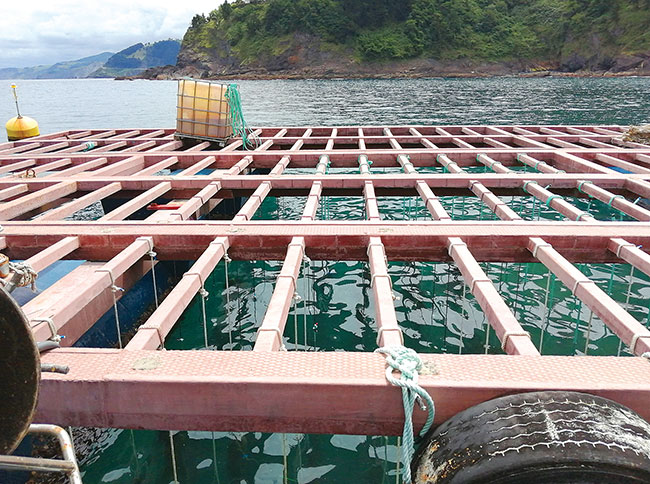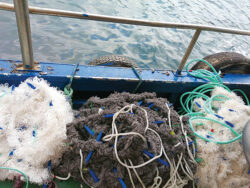
Bio-ropes could help reduce carbon footprint of aquaculture operations
July 12, 2023
By Matt Jones
 Spanish tech center AZTI are developing ropes made of biopolymers
Photos: AZTI
Spanish tech center AZTI are developing ropes made of biopolymers
Photos: AZTI New ropes made from bio-materials could help significantly reduce the amount of conventional plastics utilized in aquaculture processes. Spanish science and technology center AZTI claims that the biopolymer created ropes could help achieve a 34 percent reduction in carbon footprint compared to the ropes that are traditionally used in shellfish or algae aquaculture.
Testing has thus far indicated that the effectiveness of the bio-ropes is virtually identical to traditional plastic ropes, but the potential ecological benefits will provide an advantage.
“It’s an aspect of decarbonizing aquaculture,” said Leire Arantzamendi, a senior researcher with AZTI. “They are also compostable at the end of life, so that’s another advantage compared to the fossil-based ones, as they usually end up in the landfill or an incinerator, which puts more and more CO2 in the atmosphere.”

while still in early development stages, the results of their efforts look extremely promising.
While further testing is required to find out if the bio-ropes will be recyclable, they have determined that they are compostable at an industrial scale.
“Our hypothesis related to the scientific literature so far, is that we perhaps cannot expect these bio-based ropes to produce microplastics or at least to produce them to not be so ecotoxic,” said Arantzamendi.
There is some literature, she notes, that has indicated the bio-plastics can be similarly toxic to conventional plastics, but that research was done at much higher concentrations than you would find in the marine environment. In over a year of testing Arantzamendi says that AZTI have yet to find any microplastics in their water.
The project has already seen some significant interest from mussel and seaweed producers in North America – those farms that have expressed interest will likely take part in further assessments and trials as they continue the path towards commercialization.
With ongoing testing, Arantzamendi estimates that, if they are found to be viable, the bio-ropes will be introduced into the market in less than five years.





